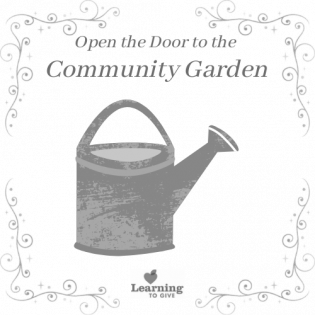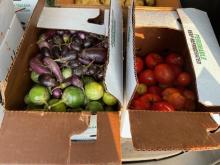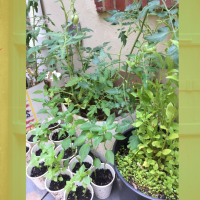Open the Door to the Community Garden
The "Open Doors to Your Community" project is a virtual door that guides young people to the actual door of local resources so they can learn about their community, take action, and build connections and understanding of their roles in community.
What Is the Purpose of a Community Garden Program?
In every community there are families who don't have access to affordable fresh fruits and vegetables. In the U.S.A., there is enough food to feed everyone, but it doesn't reach the people in need because there is tremendous food waste and a lack of fresh produce in neighborhood grocery stores. Often, unhealthy convenience foods are more affordable or what is most available through a local food pantry. Growing produce for a family or to donate is one solution that addresses both food availability and the problem of food waste. In your community, there may be neighborhood community gardens and gleaners who pick up food from farms and commercial sites that might otherwise be thrown away. This food is made available for families who are food insecure. This means they aren't sure where there next meal is coming from. What do you now about gardening and community gardens as a solution to local hunger?Meet the Community Gardener
In this brief video, we meet Stacey Evers, from HandsOn Harvest in Virginia. She shares how their nonprofit organization boosts access to fresh produce and reduces food waste. They support gardeners with free seeds, plant starts, and mentorship, and make it easy for gardeners and farmers to donate to food banks and other organizations that distribute fresh produce. They are also working to increase the number of community gardens, especially in food-insecure neighborhoods.
Contact Your Local Fresh Produce Advocate
Look online for a local community garden or gleaner organization. You may also call a food pantry to find out who supplies them with fresh produce. Call to set up a phone or in-person interview. Tell them you'd like to learn more about the work of the gardening program so you can get involved or volunteer to help their mission. Ask for 30 minutes or an hour of their time. The Interview Script linked here and below can help you make the call.Interview Questions
These questions can help you learn about your community and ways you can get involved.
- What is the main purpose of the community garden? This may be its mission or vision.
- What are some challenges in the community that the growers or gleaners seek to address?
- What are some programs that address those issues?
- What can a young person do to provide fresh fruits and vegetables for families?
Take Action in Your Community
Reflect on the work of the farm or garden donation programs in your community. What can you help them do? Your voice and time matter. The resources below can help you plan a project.
The best service-learning projects guide us to gain and use knowledge, are led by youth voice and passion, address a need, and develop connections with local resources over time.
 Learning to Give Issue Area Toolkits include background on the issue, community connections, lessons and activities, project ideas, and planning guides. Check out the Hunger and Malnutrition toolkit as well as the Humans and the Environment toolkit.
Learning to Give Issue Area Toolkits include background on the issue, community connections, lessons and activities, project ideas, and planning guides. Check out the Hunger and Malnutrition toolkit as well as the Humans and the Environment toolkit.
 Learning to Give Service Sparks guides provide directions for generous actions that encourage youth voice and promote the common good. Check out the Grow Something to Give service project here. This is an opportunity to start your own community garden or connect with an organization increasing fresh food access in food deserts.
Learning to Give Service Sparks guides provide directions for generous actions that encourage youth voice and promote the common good. Check out the Grow Something to Give service project here. This is an opportunity to start your own community garden or connect with an organization increasing fresh food access in food deserts.
 Learning to Give Literature guides combine selected literature with thought-provoking discussions and activities that teach about giving and civic engagement. Read aloud a picture book to a younger child or a retirement home buddy. This beautiful book Fry Bread celebrates food as part of culture that brings family together. If You Plant a Seed is a garden metaphor for growing kindness.
Learning to Give Literature guides combine selected literature with thought-provoking discussions and activities that teach about giving and civic engagement. Read aloud a picture book to a younger child or a retirement home buddy. This beautiful book Fry Bread celebrates food as part of culture that brings family together. If You Plant a Seed is a garden metaphor for growing kindness.
More about Gardens and Community
Fun Facts:
- Because of the COVID-19 pandemic and resulting economic crisis, pantries were experiencing a 400% increase in demand. In some communities gardeners donated a ton of fresh produce.
- Gardening is easy and cheap. You don't have to worry about perfection. If it doesn't grow, try again.
- Community gardens are most popular in times of crisis: during a war, when families don't have enough food, and when people feel isolated and alone.
Other Services Gardens Provide:
- Gardens can be meeting spaces in community.
- Knowledge and practice gained in community can be brought home to a backyard or container garden.
- Gardens are places of peace and meditation.


